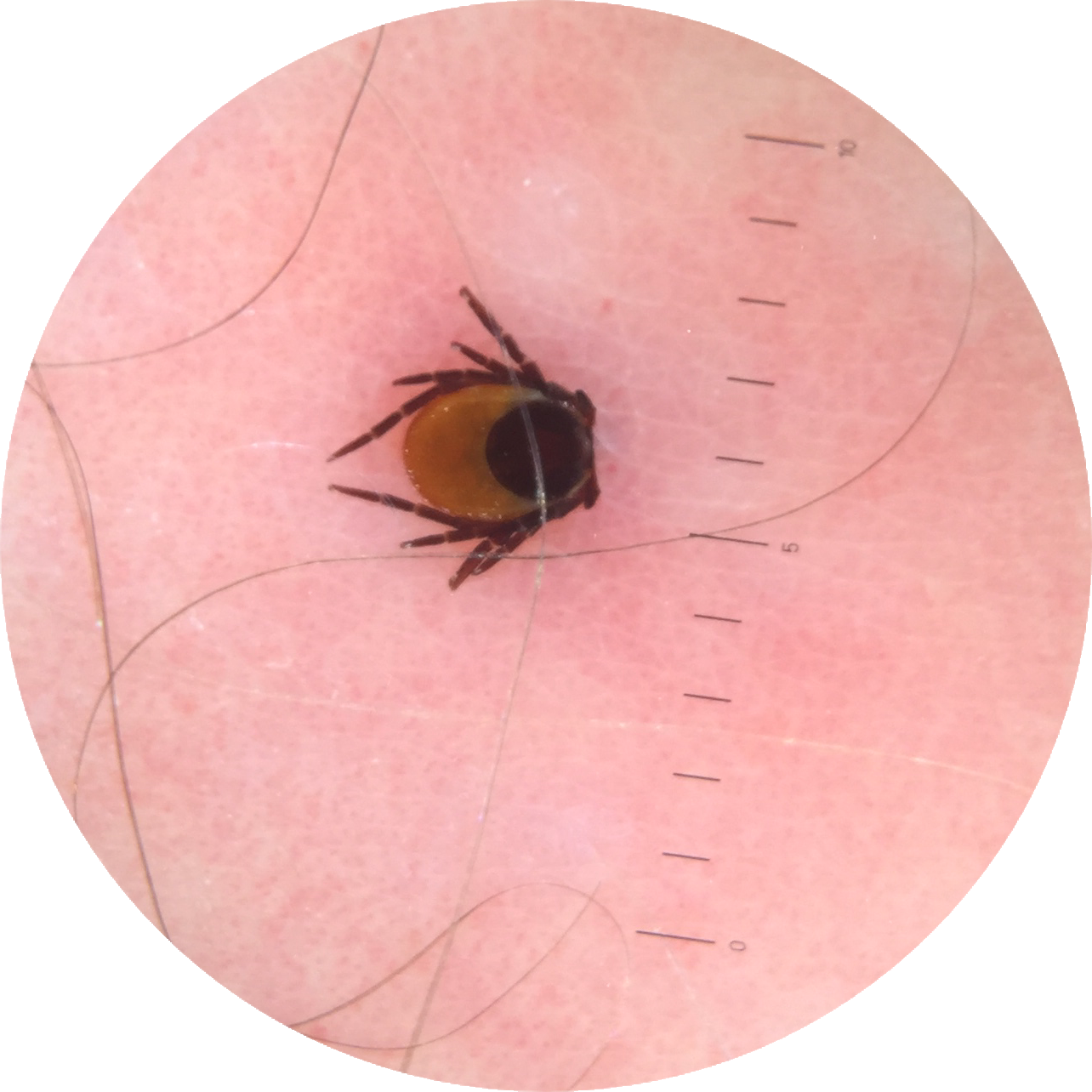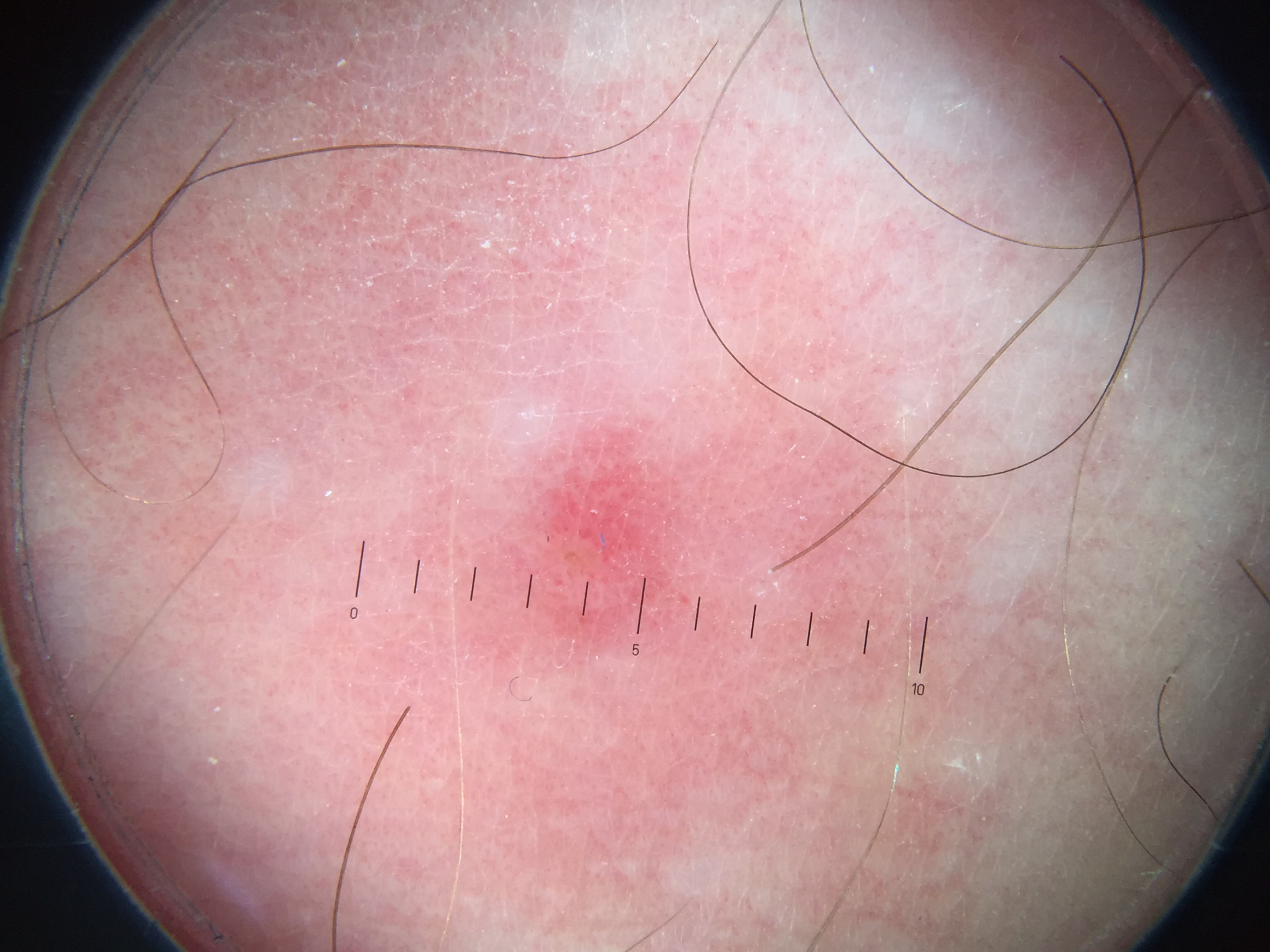Ticks and Lyme borreliosis
Ticks are widespread and can be found primarily on grass, bushes and leaves. Waiting for a suitable host, they attach themselves on clothes or directly on the skin as soon as the opportunity presents itself. About 20 tick species are known in Germany, whereas the Castor Bean tick (Ixodes ricinus) harms human beings most frequently. While ticks only posed a danger during the summer months in the past, as they used to be hibernating during the winter months, they have since become active all year round due to the mild winters.
Tick bites itself would not be problematic, but ticks are regularly carriers of bacteria (which cause Borreliosis) and viruses (the causative agent of spring-summer meningoencephalitis, FSME). Depending on the region, very rarely, they may also transmit other diseases such as Babesiasis, Ehrlichiosis, Rickettsiosis or Neoehrlichiosis.
As the carriers are found in the intestine of the Castor Bean ticks, the tick must draw blood from its host for about 12 hours until they are transmitted via the salvia to the host. In Germany, about 2,6 % to 5,6 % of the people who were bitten by a tick are infected with borrelia. In much rarer cases, ticks are infected with FSME viruses. Ticks are much less likely to be infected with the FSME virus.

Tick
Diagnosis with the dermatoscope
Once the tick has been identified, it should be removed as quickly as possible.
But sometimes this is not quite as easy: On the one hand, irritated small fibromas, which are usually found on places that are also preferred by ticks, such as neck, axillary or the groin region, can sometimes hardly be distinguished from ticks. In this case, a dermatological examination at the doctor can help finding the right diagnosis.
On the other hand, the tick’s mouth parts may be left behind in the skin. This in itself is not dangerous with regard to the communicable diseases transmitted by ticks, but may result in a strong localised infection that may require local therapy. With the help of a dermatoscope, a doctor can remove these parts using splinter tweezers or a small punch.
A working ring on the dermatoscope can also be helpful for removing these remains. The HEINE diSTANCE working ring maintains a constant distance between the skin and the dermatoscope and at the same time creates space for removing very small foreign bodies – while also providing optimal illumination and magnification through the dermatoscope.
After removing the tick, the bite spot has to be monitored for a few weeks. It is possible to send your tick to a laboratory for testing to see if they carry borrelia. This approach however is a controversial issue. When blood samples are taken for a determination of antibodies it should be understood, that it takes a certain time to verify them.

Tick bite spot
Therefore, above all the clinical picture helps to make a diagnosis: Lyme disease first manifests itself almost always as a local infection of the skin, the erythema migrans. The classic sign of an early local infection is a circular, outwardly expanding red rash of several centimeters which occurs at the site of the tick bite. Due to the mild symptoms, this early skin disease may not be seen or noticed, e.g. on the scalp of children.
Haematogenous dissemination may occur and usually goes along with an influenza-like clinical picture. Other organs may also be affected, typically the nervous system and the joints.